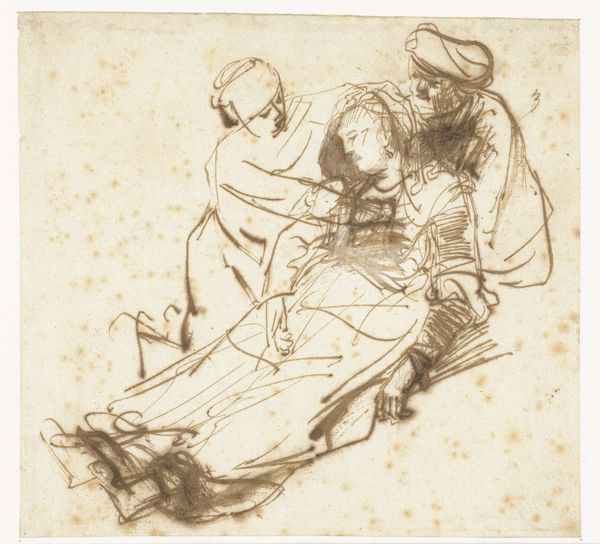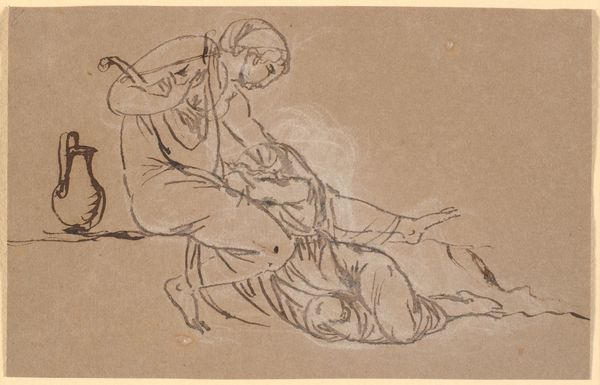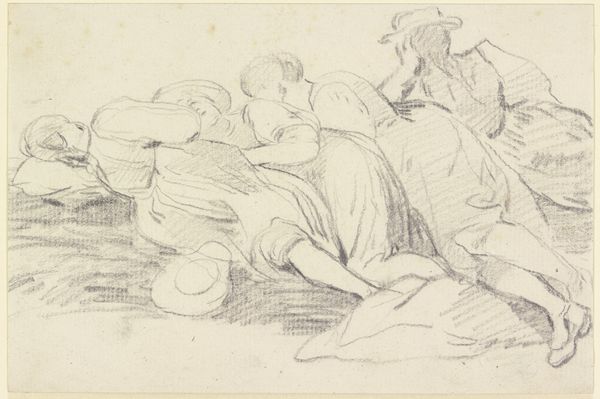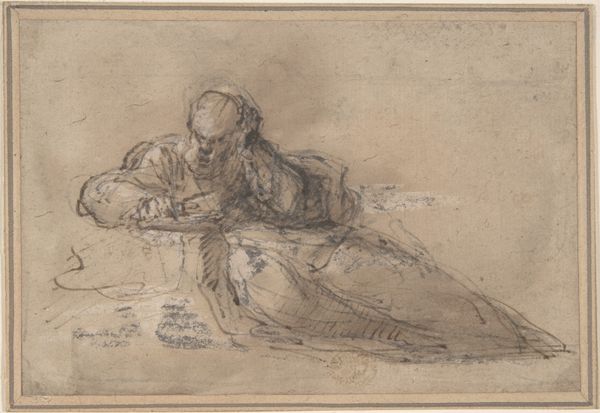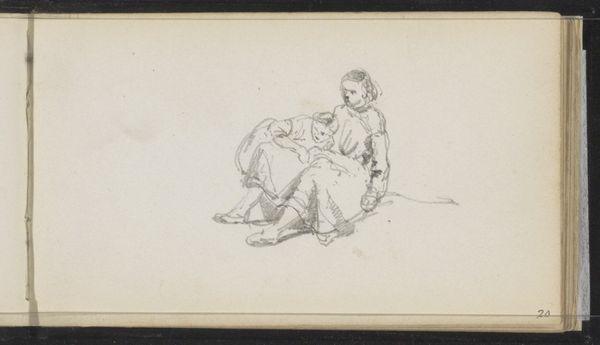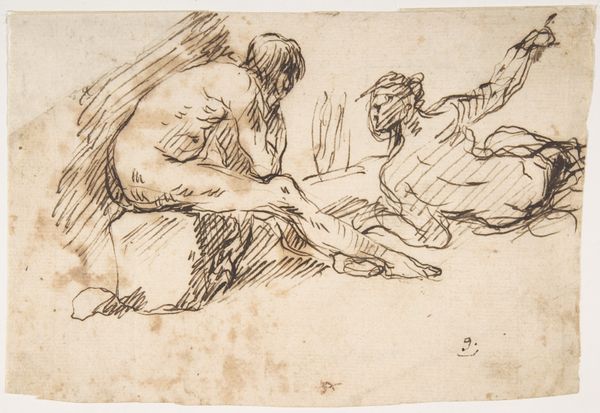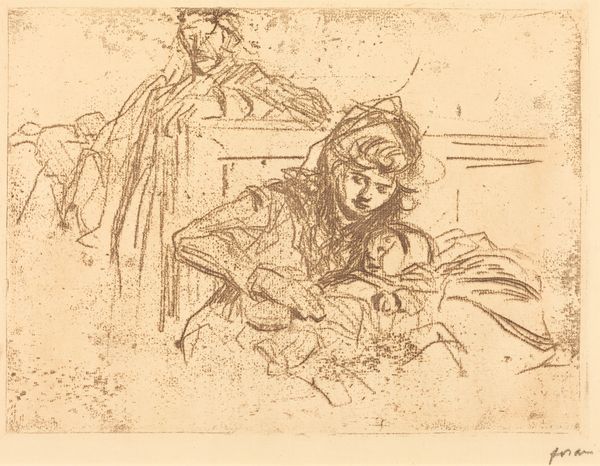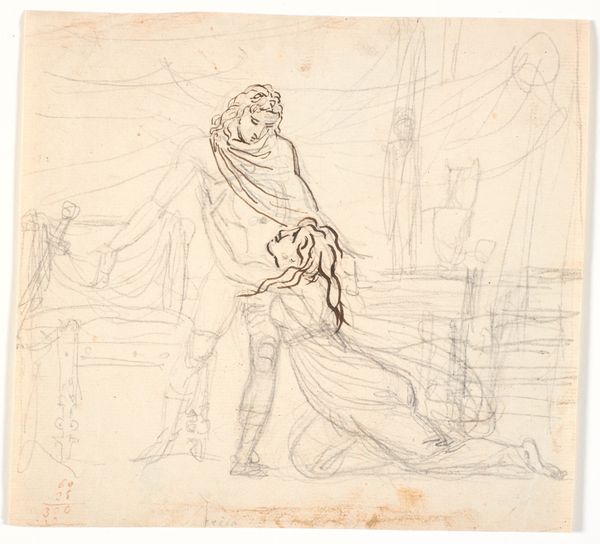
drawing
#
drawing
#
toned paper
#
light pencil work
#
ink drawing
#
pen sketch
#
personal sketchbook
#
ink drawing experimentation
#
pen-ink sketch
#
sketchbook drawing
#
watercolour illustration
#
sketchbook art
Dimensions: 127 mm (height) x 176 mm (width) (bladmaal)
Editor: So, this is Nicolai Abildgaard’s "Sappho og Mytilenerinden" from 1807-1808, a drawing in the collection of the SMK. It feels quite intimate, like a glimpse into a private moment. What strikes you about this piece? Curator: What I notice first is the physical labor evident in its production. Look at the artist’s hand at work: the deliberate choice of ink on toned paper, a relatively inexpensive medium allowing for experimentation. It reveals Abildgaard’s focus on *process*, not just the final image. Think about the availability and cost of materials like ink and paper in the early 19th century. This impacts the accessibility of art making. Editor: So, you're seeing the drawing itself as a kind of record of labour and the available means of making art? Curator: Precisely. It disrupts the notion of the artist as solely a purveyor of transcendent ideas. The subject matter—Sappho, the famed poet of Lesbos— is interesting, but consider how it is delivered. This sketch prioritizes the *how* over the *who*. We can analyse the social context; what did it mean to depict Sappho? Who would buy/collect it? What sort of drawing might exist in a private collection versus a public commission? Editor: I hadn't thought about that, how the means of production and consumption influence how we see even mythological subject matter. Curator: Absolutely. It's a move away from idealized notions of artistic genius and moves towards art being something constructed through work and materiality. What's your perspective on that now? Editor: It shifts the focus, doesn’t it? Away from simply admiring the finished product and towards appreciating the conscious choices the artist made and the context of its creation. I’m seeing this work completely differently. Curator: Indeed. Art becomes less about "inspiration" and more about skillful *making* within certain material and social parameters.
Comments
No comments
Be the first to comment and join the conversation on the ultimate creative platform.

